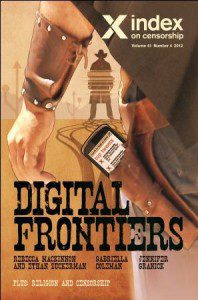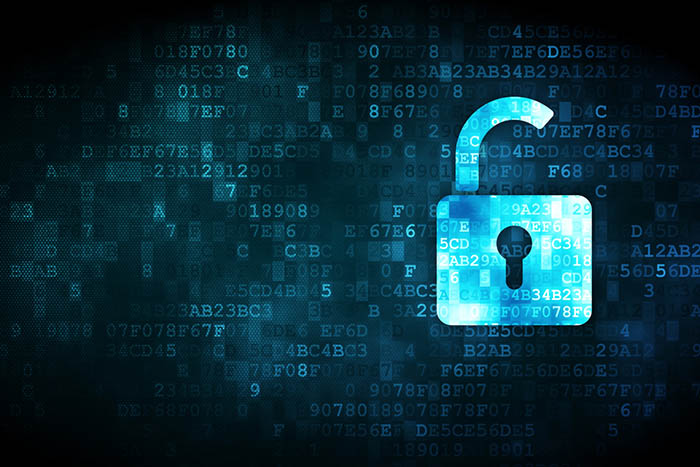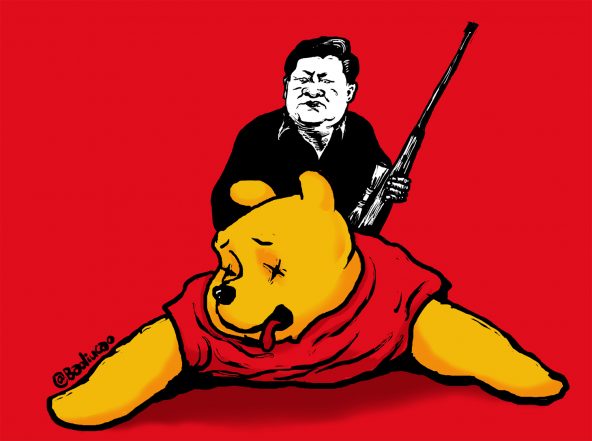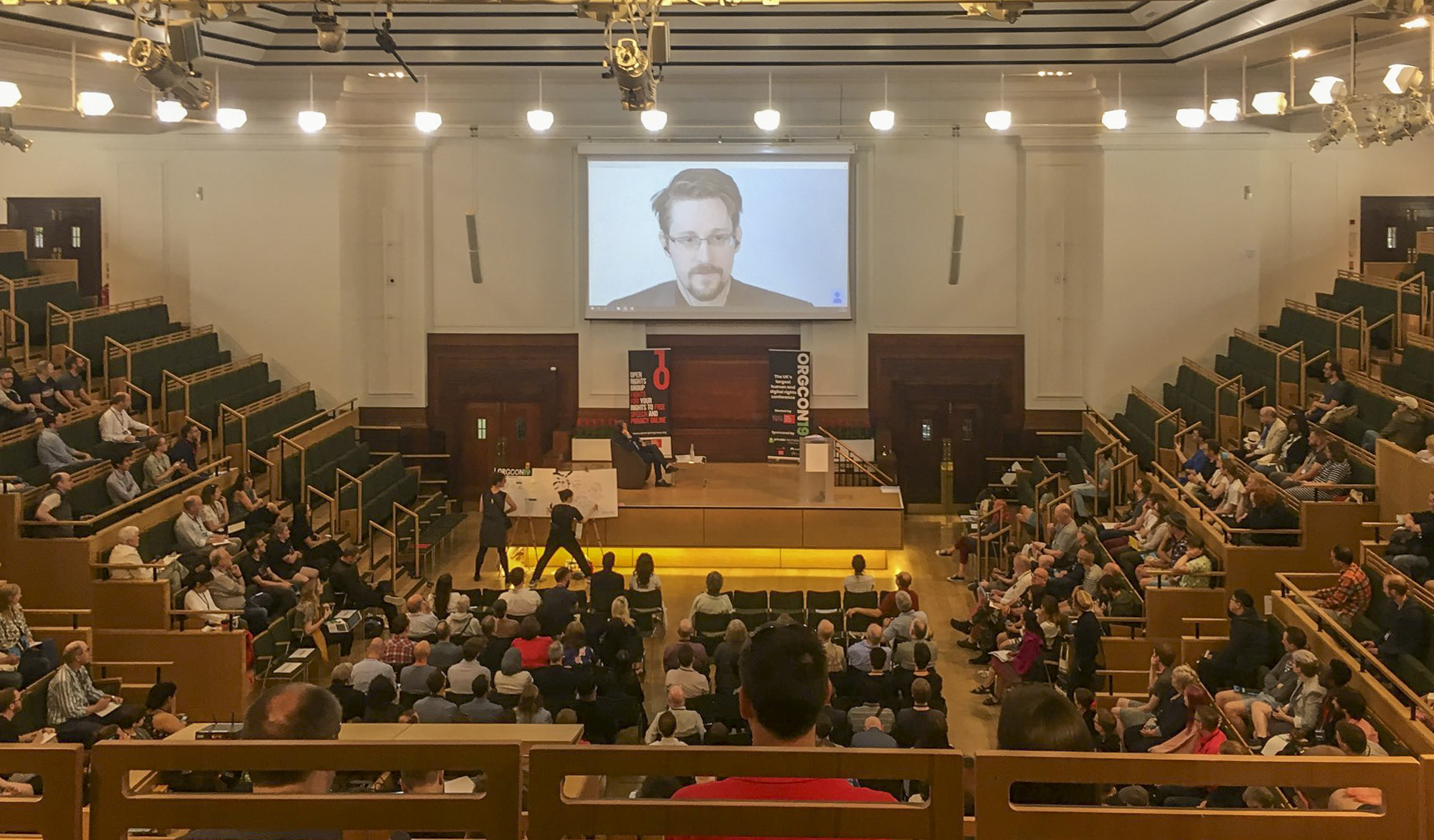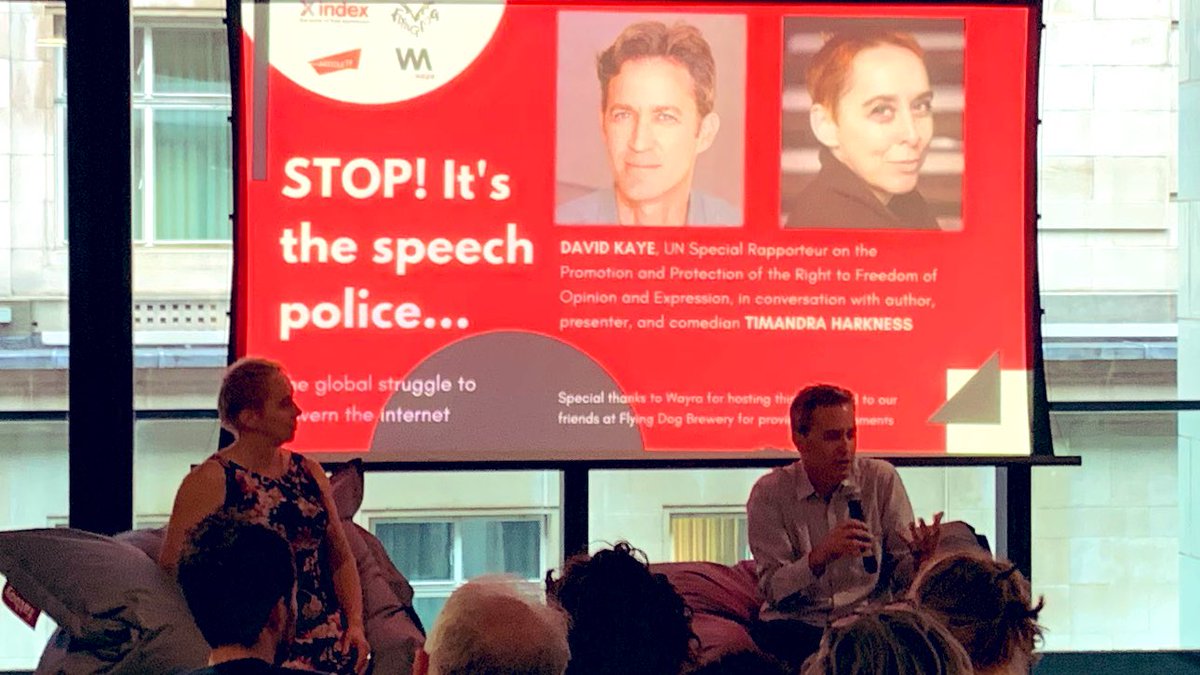An anti-Muslim video demonstrated how politics of fear dominate the online environment. It’s time we took action, argue Rebecca MacKinnon and Ethan Zuckerman

In September 2012, the trailer for the film The Innocence of Muslims shot to infamy after spending the summer as a mercifully obscure video in one of YouTube’s more putrid backwaters.
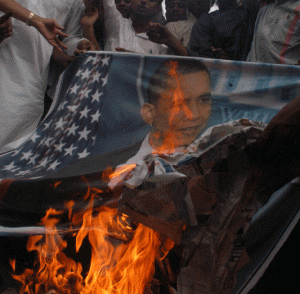
Protests against the Innocence of Muslims film took place around the world
Since then, there has been much handwringing amongst American intellectual, journalistic, and political elites over whether the US Constitution’s First Amendment protections of freedom of expression should protect this sort of incendiary speech, or whether Google, YouTube’s parent company, acted irresponsibly and endangered national security by failing to remove or restrict the video before provocateurs across the Islamic world could use it as an excuse to riot and even kill.
Supporters of internet censorship argue that posting The Innocence of Muslims online is the equivalent of yelling ‘fire’ in a crowded theatre. The analogy is not entirely off-base – the director of the video hoped to provoke violent reactions to his work. But we make a mistake if we focus on the man yelling fire and not on the crowded theatre.
The Innocence of Muslims was successful in sparking violence not because it was a particularly skillful – or even especially offensive – piece of filmmaking. Instead, it had a dramatic impact because it was useful to a small group who benefitted from a violent response, and because it exploited the ugly tendency of media outlets to favour simple narratives about violence and rage over more complex ones.
Increasing censorship in the name of fighting hate speech will do nothing to address the broader environment in which hate is incubated and nurtured.
Even if the US had a more narrow interpretation of the First Amendment, or if YouTube and other internet companies had more expansive definitions of ‘hate speech’, combined with more aggressive censorship practices, that would not have solved the more deep-seated problems which made it so easy for people – most of whom had never even seen the video – to riot outside the US embassy in Cairo. And any number of offensive videos or web pages could have served the authors of violence as a convenient flashpoint.
The danger of increased control of online speech is that we will not guarantee the elimination of flashpoints of violence, but we will almost surely make it a more difficult environment for those who use the internet to reduce hate and increase understanding. But if the argument for free speech is to be won, we must make more concerted and deliberate efforts to strengthen the world’s immunity against the virus of hate – both on social media and in the mainstream media.
From obscurity to widespread outcry
To understand why online censorship would not have reduced the broader threat of extremist attacks, we need to look at how this obscure video found an audience. On 1 July 2012, Nakoula Basseley Nakoula, an Egyptian-American Coptic Christian with a criminal past that includes defrauding banks and cooking methamphetamine, posted a 14-minute trailer for The Innocence of Muslims using the pseudonym Sam Bacile.
Actors were recruited to feature in a film called Desert Warriors; its script was about battles between warring tribes provoked by the arrival of a comet. After filming on the project was complete, the film was awkwardly dubbed with lines about the Prophet Mohammed that portrayed him as a sex-obsessed, violent paedophile.
Nakoula hoped the film would find an audience among Muslims living in southern California – it is unclear whether he thought his film would persuade them to question their faith or whether he hoped to provoke an angry public response. Though he took out an advertisement in an Arabic language newspaper and rented a small cinema for a screening, he was unable to persuade more than a handful of people to watch the film. He had similar luck after he posted the trailer on YouTube, where it garnered only a few thousand views over the course of several weeks.
The video didn’t reach a wider audience until it was championed by two vocal opponents of Islam, Pastor Terry Jones and Coptic activist Morris Sadek. Jones and Sadek both have long records of anti-Islamic provocation. Jones is best known for launching ‘International Burn a Quran Day’ on the ninth anniversary of the 9/11 attacks, leading to protests in the US and abroad, widespread media coverage and meetings between Jones and senior US officials.
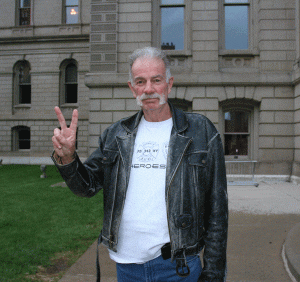
Pastor Terry Jones was largely responsible for the dissemination of The Innocence of Muslims
While Jones was persuaded to cancel International Burn a Quran Day, he has subsequently burned the holy book on different occasions. And The Innocence of Muslims gave the pastor a talking point for his latest publicity stunt, ‘International Judge Mohammed Day’, which he had scheduled for 11 September 2012.
Morris Sadek, who is head of the National American Coptic Assembly and frequently sends out emails denigrating Islam, is well known among the Coptic community in the US and Egypt. He posted Nakoula’s film, with Arabic subtitles, on the organisation’s website and sent hundreds of emails promoting the video to colleagues in Egypt.
Whether through Sadek’s actions or other means, The Innocence of Muslims came to the attention of Egyptian TV host Sheikh Khaled Abdullah. Abdullah appears on al Nas Television, a satellite channel based in Cairo, known for its conservative Islamic stance. Sheikh Abdullah is fond of telling his viewers that the US is at war with Islam, and Nakoula’s video fit in perfectly with this viewpoint.
When the video was shown on al Nas, dubbed into Arabic, it was impossible to tell that the English-language audio had been cut and pasted together. Abdullah and other commentators also implied that the film had been sponsored or supported by the US government and shown on “state television” in the States. Al Nas is watched throughout the Arabic-speaking world. Audiences in Egypt responded to the broadcast by protesting at the American embassy in Cairo on 11 September.
The 11 September rocket attack on the American consulate in Benghazi, Libya, which led to the death of US Ambassador Christopher Stephens and three other Americans, was, at the time, also viewed as an act of retaliation against the film. However, it has since been reported that the Benghazi attack was the work of violent extremists, not members of the general public, who took advantage of the unfolding chaos in Cairo as a suitable catalyst for their own attack.
Some reports, including a 19 October article in the Los Angeles Times, maintain that there is not sufficient evidence to suggest the attack was planned. What is clear, however, is that violent protests against the film spread, from Cairo to Dhaka, Karachi, Kabul and elsewhere.
To a Western viewer, it may be obvious that the film was made solely to provoke an angry reaction, but it was less obvious when the trailer was dubbed and presented as a new film for American audiences. Given understandable resentment towards American military engagement in Iraq, Afghanistan and Pakistan, and a steady narrative from commentators like Sheikh Khaled Abdullah that America is at war with Islam, it is not hard to see how some Muslims took the film seriously and rose to the provocation.
Violent protests were, of course, what Nakoula, Jones and Sadek wanted. Given that Jones and Sadek argue that Islam is a dangerous religion, the burning of the Benghazi embassy represents a victory. The violent protests may have been what Sheikh Abdullah wanted as well, given his calls for Muslims to fight against perceived slights to Islam.
‘Don’t feed the trolls’
In internet terminology, Nakoula, Sadek and Jones are essentially trolls. Trolls attempt to hijack a discussion through harassment or inflammatory content, hoping to provoke an emotional response. The troll ‘wins’ when discussions descend into virtual shouting matches. Over time, those who regularly write and read blogs, or participate in discussions on social media, have developed some resistance to trolls.
Recognising that trolls feed on attention and that often their satisfaction is directly proportional to the unnecessary conflict they are able to create, it is common for moderators of online platforms to greet newcomers with the warning ‘Don’t feed the trolls’ – in other words, if someone is trying to incite you, don’t bother responding, as your angry attention is exactly what the troll wants.
Censoring trolls rarely succeeds – they tend to return, even more disruptive than before, using new monikers. Instead, the best way to silence trolls is to ignore them.
The broader global information ecosystem, however, has not developed robust defences against trolls. In all corners of the world, media outlets seeking to boost audiences through titillation and controversy have effectively built troll-baiting and troll-feeding into their business models. TV stations like al Nas profit from them. Commentators like Sheikh Khaled Abdullah gain power by inciting their followers to react emotionally and even violently to trolls.
The Innocence of Muslims can be seen as a targeted attack designed to exploit the predispositions of our media systems. If some media in the Middle East are actively searching for evidence that the US is persecuting Muslims, the US media since 9/11 has also paid disproportionate attention to violence committed by Muslims.

Malaysia Muslims protest Innocence of Muslims film
Protests in Libya, Egypt, Tunisia, Pakistan and elsewhere played into an existing narrative for American news outlets, a narrative best illustrated by Newsweek’s 24 September issue, dedicated to the topic of ‘Muslim Rage’ and featuring a tightly-cropped image of men in turbans with saliva-flecked beards yelling with upraised fists.
The fact that violent insurgents were able to use the protests as an opportunity to carry out an attack, the plans for which had probably already been laid out, of course fed into and fuelled the narrative.
The trolls behind The Innocence of Muslims exploit both of these predictable narratives. They provide Middle Eastern Muslims with evidence that Americans misunderstand and disrespect Islam so badly that hundreds of people were willing to get together and make a film insulting the Prophet.
The ensuing protests play to the American commercial media’s focus on the sudden and violent reactions, at the expense of processes that may be more important but are hard to portray visually: the authoring of a Libyan constitution, peaceful elections in Egypt.
Newsweek’s cover invites us to see the Libyan protest the way Nakoula and Pastor Jones see it, as evidence that Islam is unpredictable and violent. Other perspectives tell a different story.
Marc Lynch, a leading scholar of Arab media, points out that the protests, while sometimes violent, ‘were actually quite small – vastly inferior in size and popular inclusion to the Arab uprising protests last year and small even in comparison to the ongoing pro-democracy or other political demonstrations which occur on a weekly basis in many Arab countries’.
One protest that was not widely reported took place on 21 September, ten days after the consulate was destroyed, ‘where tens of thousands came out in Benghazi in an inspiring rally against militias and against the attack on the US consulate’. A day later, similar rallies ousted the Ansar al Sharia militia, believed to have set the US consulate on fire, from their base near the city. While dozens of op-ed writers picked up their pens to opine on Muslim rage, Lynch notes, few have been inspired to write about these massive rallies in support of the US.
In a YouTube video that offers a very different view, footage by Libyan activist Fahd al Bakoush reveals a dozen men carrying Ambassador Stephens, unconscious from smoke inhalation, out of the burning consulate to a car to take him to the hospital.
When the men discover Stephens is still alive, they chant ‘God is Great’. Tens of thousands of Benghazi residents marched against one manifestation of ‘Muslim rage’.
At the same time, many American Muslims reacted to the Newsweek cover by laughing at it. It invited people to share their thoughts online, using the Twitter hashtag #Muslimrage. Hundreds of Muslims in the US and elsewhere did so, posting pictures of themselves looking mildly annoyed, with captions depicting their ‘rage’ at the frustrations of ordinary life.
Some of these photographs, collected on tumblr.com, feature captions like: My bookmark fell out and now I have to page through to find my spot. #MuslimRage kebabs burning! why my timer didn’t go off? #MuslimRage 3-hour lecture tomorrow at 8 am. Why. #MuslimRage The #Muslimrage tweets sent a clear message: violent protesters represented an infinitesimal fraction of the nearly two billion Muslims worldwide.
Newsweek’s attempt to create an angry dialogue around the topic wasn’t worth engaging with, except to poke fun at it. With marches in Benghazi and tweets from the US, many Muslims are trying to fight a simplistic narrative that makes it hard to see and understand a larger transformation that is taking place in the Middle East – a move from a world of oppressive autocrats and suppressed religious movements to representative governments that strive to balance moderate Islam and electoral democracy.
Many were unable to see the smiling and sarcastic #Muslimrage because they were so blinded by the overblown and violent ‘Muslim rage’ suggesting that that their primary sources of information about the world are giving them a distorted picture – with plenty of help from political leaders across the Muslim world who stand to benefit politically in taking an anti-US and anti-Western stance.
This amplification of some narratives over others, causing cosmopolitan, disparate Muslim voices to be muted in favour of extremists, feeds and empowers ‘trolls’ and those who profit from them. The result is a vicious and often deadly cycle of reactions and counter-reactions.
Finding another way
The solution to this problem is not censorship. Trolls must be exposed for what they are if they are to be disempowered – not only on the internet but throughout the world’s media and political systems. But trolls succeed only because they understand the workings of media well enough to exploit it. The real solution is to build a media that is better at providing context and showing proportionality, so we can see just how marginal figures like Nakoula and Jones really are.
 A global anti-troll movement is building itself through skilled and innovative use of the internet. In the vanguard are articulate, multi-lingual, multi-cultural individuals who can translate and contextualise global events from the perspective of people who have the most to lose when the power of trolls and troll-enablers goes unchecked.
A global anti-troll movement is building itself through skilled and innovative use of the internet. In the vanguard are articulate, multi-lingual, multi-cultural individuals who can translate and contextualise global events from the perspective of people who have the most to lose when the power of trolls and troll-enablers goes unchecked.
These cosmopolitan figures need to be empowered, their voices amplified. They are people like Mahmood al Yousif, a Bahraini entrepreneur who started one of the Persian Gulf’s first dial-up online bulletin board discussion groups in 1986. He has since run a number of websites, including one of the most influential English-language blogs in the Gulf since 2003. His goal is to ‘dispel the image that Muslims and Arabs suffer from – mostly by our own doing I have to say – in the rest of the world,’ he explains. ‘I run several internet websites that are geared to do just that, create a better understanding that we’re not all nuts hell-bent on world destruction.’ In the discussion section attached to a post in which he condemned the consulate attack in Benghazi as ‘a heinous act and completely inhuman’, he opined: ‘Something very drastic and fundamental must change in how we interpret our religion for us not to continue to have morons continue their massacres in its name.’
How mainstream or marginal is a voice like al Yousif’s in mainstream Arab media? On a network like al Jazeera, which specialises in spirited dialogues between commentators with opposing viewpoints, it is not uncommon to hear a voice like his as one pole in a discussion. But generally, reasoned moderation and tolerance makes for boring television. It is easier to amplify angry and marginal voices, even if millions of Muslims around the world agree with al Yousif’s viewpoint.
In 2004, when we launched Global Voices, an international citizen media platform and community, one of our core goals was to amplify voices like Mahmood’s. Editors and volunteer contributors curate, translate and add context to blogs and social media around the world. This community has agreed to deliberately emphasise and amplify online citizen reports, viewpoints and conversations that receive little if any attention in the mainstream global English-language media.
This community of several hundred authors and translators – most of them multi-lingual, many of whom have lived in different countries and cultures – are working hard every day to build bridges across vast gaps of understanding and discourse about global events. Despite religious, cultural, and political differences among them, all members of the community share a belief in the importance of freedom of speech, but also in civility.
The Global Voices Manifesto concludes: ‘We believe conversation across boundaries is essential to a future that is free, fair, prosperous and sustainable – for all citizens of this planet.’ To that end, in late September the Global Voices community produced a range of blog posts covering reactions in different countries to The Innocence of Muslims video and subsequent protests.
One post republished tweets and photos by Benghazi resident Ahmed Sanalla, who reported on a protest against the deadly attack on the US Consulate. ‘Thugs & killers don’t represent #Benghazi nor #Islam. Image from today’s protest in #Benghazi’, he reported in one tweet, linking to a photo of the protest sign. Other postings covered online debates in Indonesia, Pakistan and a number of other countries about whether the film deserved the attention it had provoked and whether it made sense for their governments to censor YouTube.
One post, entitled ‘Arab World: Outrage Over Killing of US Ambassador in Benghazi’ by Middle East/North Africa Editor Amira al Hussaini featured an assortment of English and Arabic reactions. One of her translations, an Arabic tweet by Egyptian writer, proclaimed sarcastically: ‘The attack on the embassy in Libya will have a huge impact and will change the result of the elections in a way which will not benefit Arabs and Muslims. Congratulations for the terrorism we enjoy!’
There is no shortage of thoughtful commentary online that criticises violence and urges increased understanding. But it is very hard to attract public attention to these points of view. Building a new sort of global discourse where reasonable majorities have a louder voice than extremists and trolls is a mighty task. It will require investment of resources by many people and organisations around the world that believe not only in free speech but also that the status quo is dangerous.
Internet and media companies, software and web development communities and civil society must come together in a shared commitment to defuse the power of trolls and to amplify cosmopolitan discourse. We propose a concrete first step in that direction: a tool to provide better context.
Nakoula’s video was so powerful in its incitement of violence because it was taken out of context and presented as a popular film shown on national television, not as the obscure piece of trash it was. Protests around the Muslim world reinforced a narrative of ‘Muslim rage’ because western media didn’t show them in the context of larger ongoing protests against corruption and crime, or even in contrast to larger demonstrations against extremism.
The solution to offensive content on the internet isn’t censorship but context. Below every video on YouTube viewers are able to post comments. Many popular or controversial videos evoke video responses. Type ‘Innocence of Muslims’ into the YouTube search box and there are hundreds of videos posted in response to the video.
Some of the responses from around the world are as hateful as the original video, but others are thoughtful, condemning both the filmmaker and the people who reacted violently to it. Dallas-based imam Nouman Ali Khan, for example, offered a moving video response that urged Muslims to feel pity for the makers of the video and their ignorance, not anger.
But while YouTube provides a platform for discussion and reaction to content, these conversations are themselves easily hijacked by trolls. YouTube does not help contextualise controversial content, or neutralise its inflammatory nature by exposing and condemning the conditions under which it was created, or the way in which it is being used.
The site could offer an explanation about the controversy, making it more difficult for al Nas to claim that The Innocence of Muslims was a mainstream – even state-sanctioned – production. YouTube could offer its users options to click through to further information and discussion. People could then click to a regularly-updated page on which editors collect relevant news stories and blog posts about the film’s origins and global reactions to it.
It could also offer visualisations showing what other sorts of websites, blogs, and tweets are linking to it, revealing who is influenced by or amplifying that particular piece of content – and what they are saying. These pages could also be translated into the most relevant languages. YouTube could hire a rapid-response editorial staff to build such pages around controversial content.
Yet one could argue that placing such editorial responsibilities in Google’s hands concentrates too much power over the public discourse. Furthermore, by assuming an active editorial function to its platform, YouTube would weaken its legal argument – often made in response to censorship demands – that it is a mere conduit for user content and thus cannot be held legally responsible for speech.
It might make most sense for the editorial team and rapid-response page to be part of a separate organisation, hosted on web pages that YouTube links to but does not own or control. There is a precedent for this: when Google and Twitter are compelled by court order or copyright take-down notice to remove content, they display a link from the page where that content once resided to the third-party non-profit website Chilling Effects, which serves as a repository for the legal documents behind a censorship demand.
Similarly, a third-party organisation run by skilled editors, bloggers, web developers, media researchers and translators could be entrusted make independent decisions about which YouTube content (and other social media content as well) most urgently requires the creation of a page offering more information about its broader context and public responses.
This is only one of many possible ways to add context to online speech. Whether platforms like YouTube tackle the challenge directly, or partner with others to contextualise their content, if free speech is to be successfully defended, the world desperately requires media and innovations that will neutralise destructive trolls such as the ones who created, promoted, and exploited The Innocence of Muslims.
Rebecca MacKinnon is a blogger and co-founder of Global Voices Online. She is notable as a former CNN journalist who headed the CNN bureaus in Beijing and later in Tokyo. She tweets from @rmack
Ethan Zuckerman is an American media scholar, blogger, and co-founder of Global Voices Online. He is the director of the MIT Center for Civic Media. He tweets from @EthanZ

